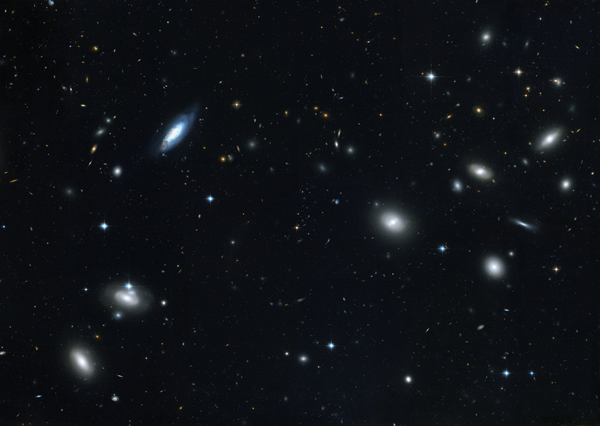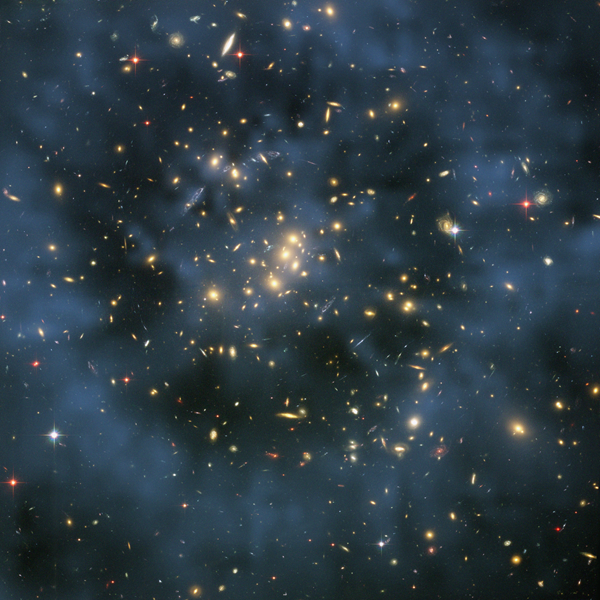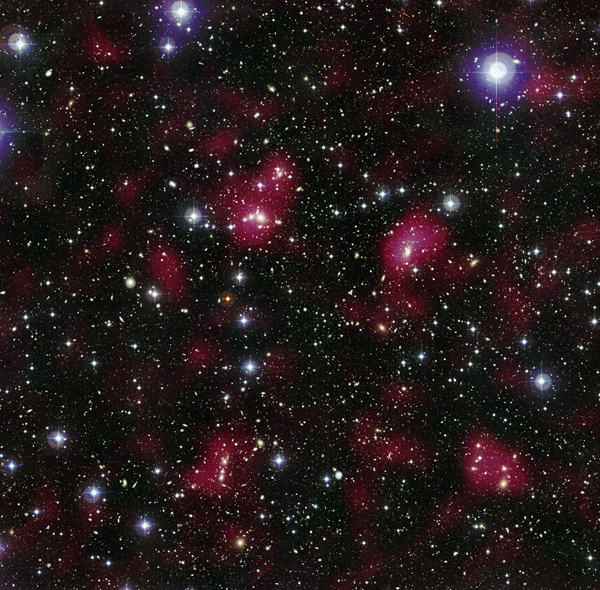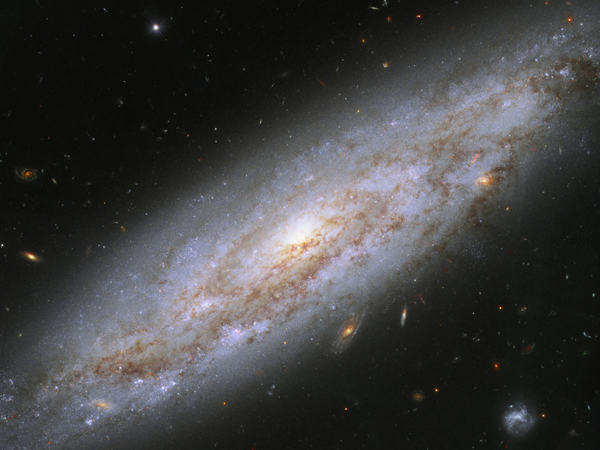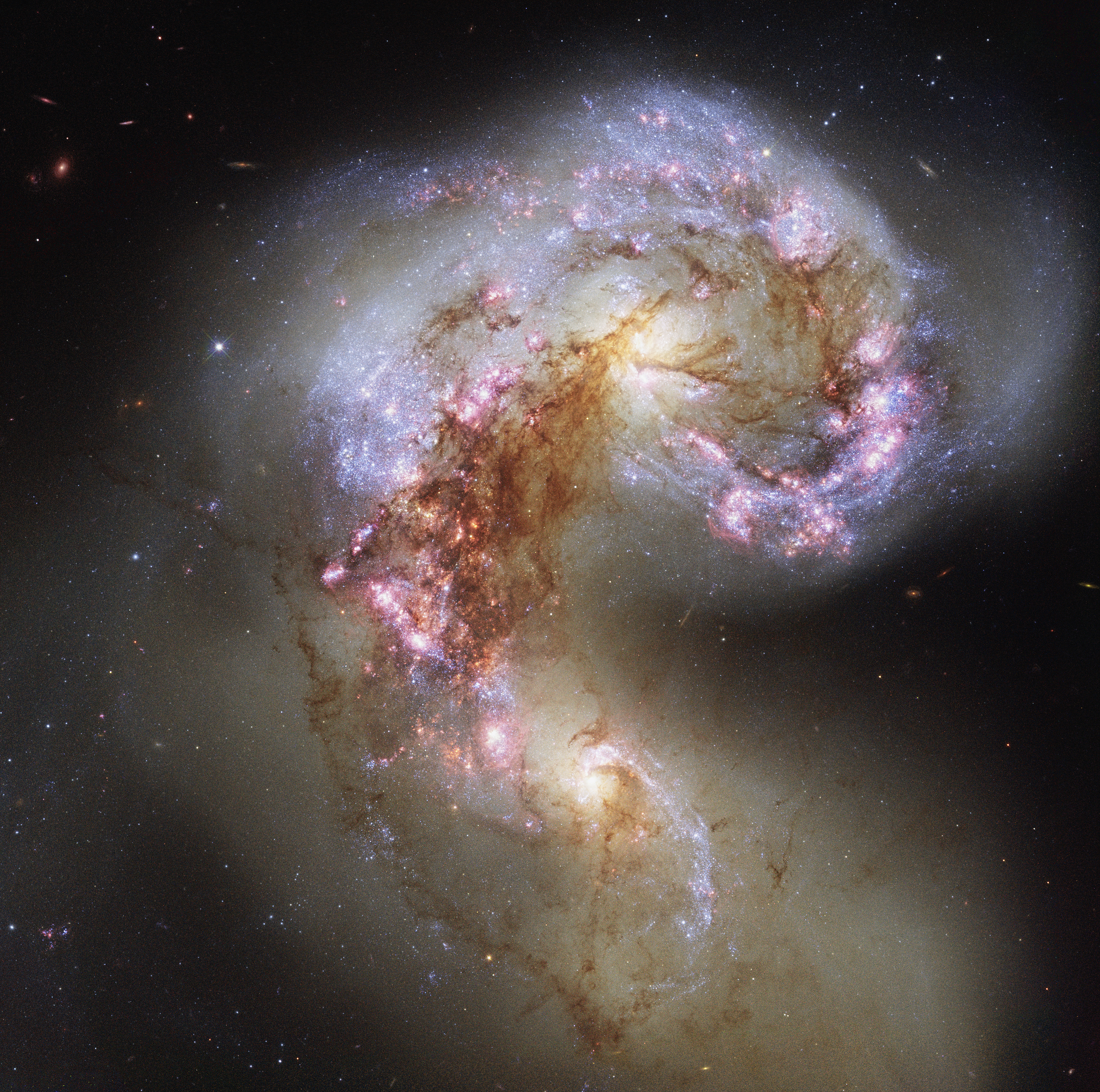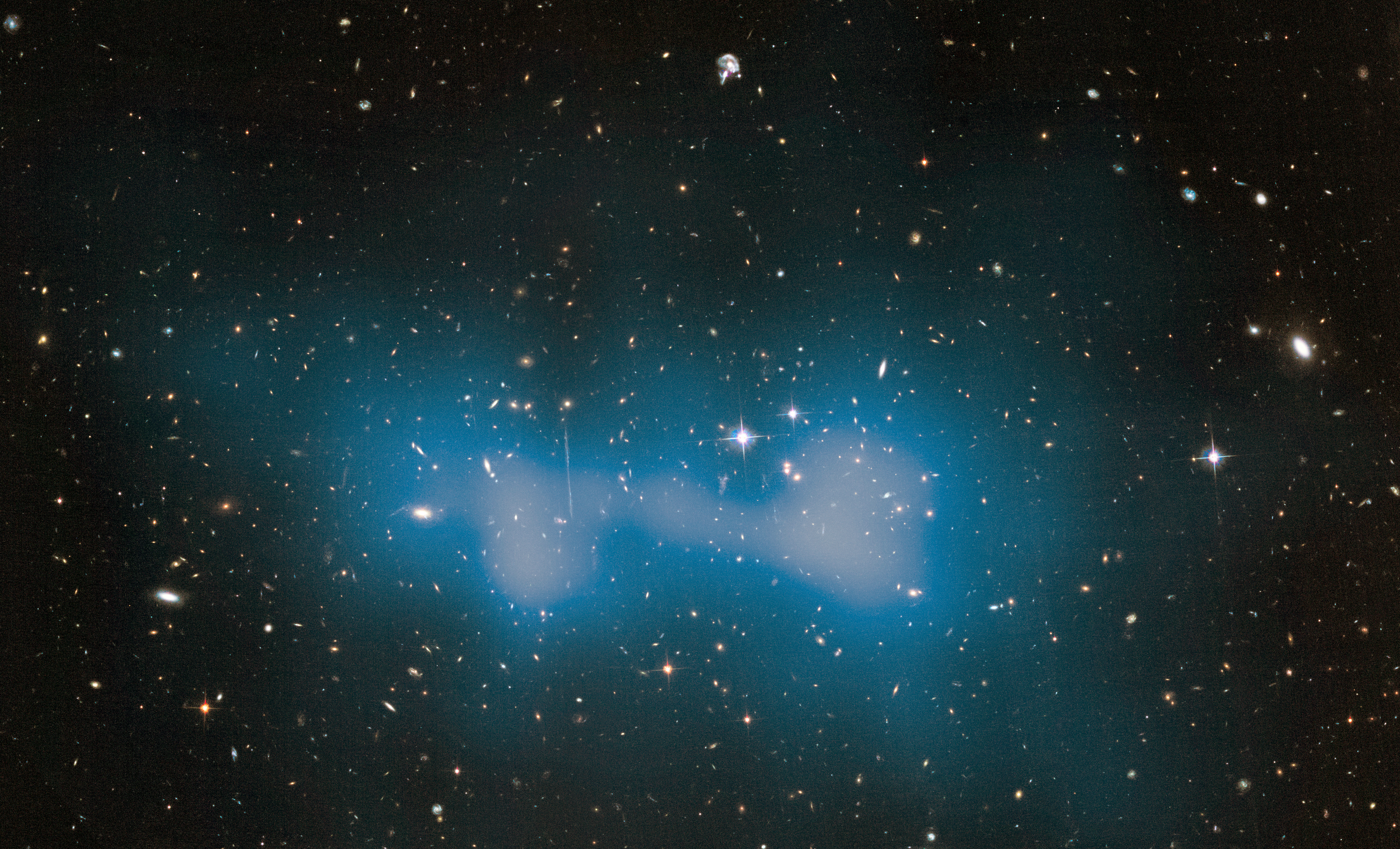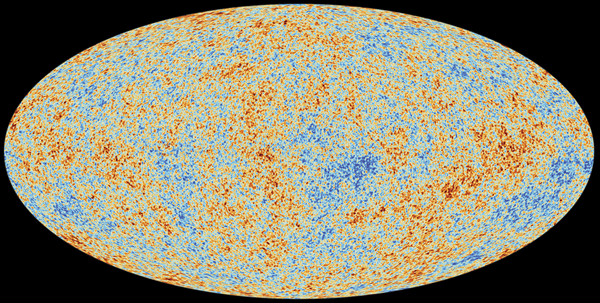But cosmologists have struggled — if not outright failed — to understand essential facets of the universe. We know almost nothing about dark matter and dark energy, which together make up more than 95 percent of the total energy in existence today. We don’t understand how the universe’s protons, electrons, and neutrons could have survived the aftereffects of the Big Bang. In fact, everything we know about the laws of physics tells us that these particles should have been destroyed by antimatter long ago. And in order to make sense of the universe as we observe it, cosmologists have been forced to conclude that space, during its earliest moments, must have undergone a brief and spectacular period of hyperfast expansion — an event known as cosmic inflation. Yet we know next to nothing about this key era of cosmic history.
It is from this perspective that some cosmologists have found themselves asking whether these cosmic mysteries might be symptoms of something more significant than a few loose threads. Perhaps these puzzles are not as unrelated as they might seem, but are instead collectively pointing us toward a very different picture of our universe and its earliest moments.
What we’ve learned by not discovering dark matter
Dark matter is likely the most celebrated problem facing modern cosmologists. Astronomers have determined that most of the matter in our universe does not consist of atoms or any other known substances, but of something else — something that does not appreciably radiate, reflect, or absorb light.
Despite not knowing much about the nature of dark matter, cosmologists often speculate about the kinds of particles that might make up this substance. In particular, researchers have long recognized that if dark matter particles interact through a force that is approximately as powerful as the weak nuclear force (which governs radioactive decay), then the number of these particles that should have emerged from the Big Bang would roughly match the measured abundance of dark matter found in the universe today. With this in mind, weakly interacting massive particles — WIMPs — became the best guess for dark matter’s nature.
These sophisticated experiments performed beautifully — as well as or better than designed. Yet no such collisions have been observed. A decade ago, many scientists were optimistic that these experiments would bear fruit. But dark matter has turned out to be very different, and far more elusive, than we had once imagined.
Although it’s still possible that dark matter could consist of some form of difficult-to-detect WIMPs, the lack of any signal from underground experiments has led many physicists to shift their focus toward other dark matter candidates. One such contender is a hypothetical ultralight particle known as an axion. Axions are predicted according to a theory proposed by particle physicists Roberto Peccei and Helen Quinn in 1977. Although scientists are searching for axions in experiments that use powerful magnetic fields to convert them into photons, these investigations have yet to place very strict constraints on the properties of these particles.
Although cosmologists know a great deal about how our universe expanded and evolved over most of its history, they know relatively little about the first seconds that followed the Big Bang — and next to nothing about the first trillionth of a second. When it comes to how our universe may have evolved, or to the events that may have taken place during these earliest moments, we have essentially no direct observations on which to rely. This era is hidden from view, buried beneath impenetrable layers of energy, distance, and time.
Our understanding of this period of cosmic history is, in many respects, little more than an informed guess based on inference and extrapolation. Look far enough back in time, and almost everything we know about our universe could have been different. Matter and energy existed in different forms than they do today, and they may have experienced forces that have not yet been discovered. Key events and transitions may have taken place that science has yet to illuminate. Matter likely interacted in ways that it no longer does, and space and time themselves may have behaved differently than they do in the world we know.
How fast is space expanding?
In 1929, Edwin Hubble discovered that galaxies are moving away from us at speeds proportional to their distances. This provided the first clear evidence that our universe is expanding. Ever since, the current rate of this expansion — the Hubble constant — has been one of the key properties of our universe that cosmologists study.
It’s fair to say that the Hubble constant has long been difficult to measure. Hubble’s original determination was plagued with systematic errors that led him to overestimate the expansion rate by a factor of 7. As recently as the 1990s, textbooks often quoted values ranging from as low as 50 to as high as 100 kilometers per second for every million parsecs separating two points in space — usually written as 50 to 100 km/s/Mpc. (One megaparsec [Mpc] equals 3.26 million light-years.) Although the precision of these measurements has improved considerably over the past two decades, no consensus yet exists regarding the correct value for this quantity. In fact, as these measurements have improved, the results from different methods seem to disagree with one another even more.
But that’s not the end of the story. Cosmologists also can infer the value of the Hubble constant by studying the primordial light released when the first atoms formed some 380,000 years after the Big Bang. The detailed temperature patterns of this light — known as the cosmic microwave background — serve as a map that shows how matter was distributed throughout the universe at that time.
When scrutinized, this map reveals many details about our young universe, including how much matter and other forms of energy were present, as well as how fast space was expanding. It also tells us that the Hubble constant is about 67 km/s/Mpc — a significantly smaller value than cosmologists have found through more direct measurements.
According to Einstein’s general theory of relativity, the rate at which space expands depends on the density of matter and other forms of energy it contains. When cosmologists infer the value of the Hubble constant from the cosmic microwave background, they have to make assumptions about the amounts of dark matter, neutrinos, and other substances that were present.
Perhaps the simplest way to explain the tension between the different measurements of the Hubble constant would be to hypothesize that the cosmos contained more energy than expected during the first hundred thousand years or so following the Big Bang. This energy might have taken the form of an exotic species of light and feebly interacting particles, or of some kind of dark energy associated with the vacuum of space itself that has long since disappeared from the universe. Or perhaps there is something else we don’t understand about this era of cosmic history. We simply do not yet know how to resolve this intriguing mystery.
Is a revolution coming?
As I said earlier, it’s possible that the various puzzles cosmologists face today are little more than a few trivial threads that scientists will tie up nicely in the years ahead with the help of new experiments and observations. But lately, it seems the more we study the universe, the less we understand it. Despite decades of effort, the nature of dark matter remains unknown, and the problem of dark energy seems nearly intractable. We do not know how the particles that make up the atoms in our universe managed to survive the first moments of the Big Bang, and we still know little about cosmic inflation, how it played out, or how it came to an end — assuming that something like inflation happened at all.
It is from this perspective that I sometimes find myself considering whether these mysteries might represent something greater than a few open and unrelated questions. Perhaps they are telling us that the earliest moments of our universe were far different from what we long imagined them to be. Perhaps these problems represent the beginning of a revolution for the science of cosmology.
Sometimes I wonder whether we might be on a significant precipice of scientific history, similar to what we experienced in 1904. At that time, physics had never before seemed to be on such solid footing. For more than two centuries, the principles of Newtonian physics had been applied successfully to problem after problem. And although physicists expanded their knowledge into areas such as electricity, magnetism, and heat, these aspects of the world were really not so different from those Newton had described hundreds of years earlier. To the physicists of 1904, the world seemed well understood. There was little reason to expect a revolution.
Physicists in 1904 had no idea what powered the Sun — no known chemical or mechanical process could possibly generate so much energy over such a long time. Lastly, scientists knew various chemical elements emitted and absorbed light with specific patterns, none of which physicists had the slightest idea how to explain. In other words, the inner workings of the atom remained a total and utter mystery.
Although few saw it coming, in hindsight, it’s clear that these problems were heralds of a revolution in physics. And in 1905, the revolution arrived, ushered in by a young Albert Einstein and his new theory of relativity. We now know that the luminiferous ether does not exist and that there is no planet Vulcan. Instead, these fictions were symptoms of the underlying failure of Newtonian physics. Relativity beautifully solved and explained each of these mysteries without any need for new substances or planets.
Furthermore, when scientists combined relativity with the new theory of quantum physics, it became possible to explain the Sun’s longevity, as well as the inner workings of atoms. These new theories even opened doors to new and previously unimagined lines of inquiry, including that of cosmology itself.
Scientific revolutions can profoundly transform how we see and understand our world. But radical change is never easy to see coming. There is probably no way to tell whether the mysteries faced by cosmologists today are the signs of an imminent scientific revolution or merely the last few loose ends of an incredibly successful scientific endeavor.
There is no question that we have made incredible progress in understanding our universe, its history, and its origin. But it is also undeniable that we are profoundly puzzled, especially when it comes to the earliest moments of cosmic history. I have no doubt that these moments hold incredible secrets, and perhaps the keys to a new scientific revolution. But our universe holds its secrets closely. It is up to us to coax those secrets from its grip, transforming them from mystery into discovery.


